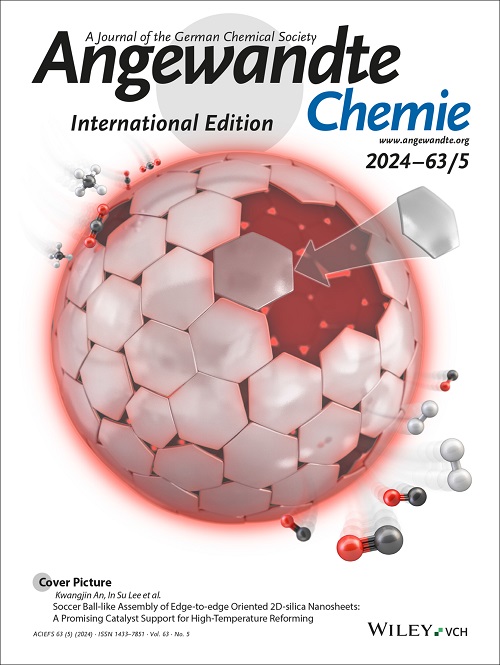IF 16.1
1区 化学
Q1 CHEMISTRY, MULTIDISCIPLINARY
引用次数: 0
摘要
我们介绍了在室温和常压条件下,以 CH4 为还原剂,在紫外光照射下,从 NO3- 一锅合成 NH3 的催化反应。NO3- 会导致水污染、富营养化和生物多样性丧失等环境问题。在自然系统和污水处理设施中,NO3- 可通过微生物过程利用氢供体解毒为 N2。不过,最好是将 NO3- 转化为 NH3,而不是 N2。为了开发一种理想的将 NO3- 转化为 NH3 的工艺,以实现社会的可持续发展,还原剂必须来自可再生资源/能源。因此,我们将目光转向了 CH4,因为它与可再生资源/能源的亲和力很高,因为它可以从牲畜粪便中产生。因此,我们在此报告的系统是利用 CH4 和光能直接将 NO3- 转化为 NH3。本文章由计算机程序翻译,如有差异,请以英文原文为准。
Photosynthesis of NH3 from NO3– using CH4 in Homogenous Rhenium Catalysis
We present Re catalysis of one‐pot synthesis of NH3 from NO3– using CH4 as a reductant under UV light irradiation at room temperature and normal pressure. NO3– leads to environmental issues such as water contamination, eutrophication and biodiversity loss. In a natural system and a sewage facility, NO3– can be detoxified to N2 using hydrogen donors by microbial process. However, it is better to convert NO3– to NH3 rather than N2. To develop a desirable process of NO3– to NH3 for a sustainable society, it is required that the reducing agent is derived from a renewable resource/energy. Thus, we turned our attention to CH4, which has high affinity with renewable resource/energy since it can be produced from livestock waste. Therefore, our system reported here is to directly convert NO3– to NH3 using CH4 with light energy.
求助全文
通过发布文献求助,成功后即可免费获取论文全文。
去求助
来源期刊
CiteScore
26.60
自引率
6.60%
发文量
3549
审稿时长
1.5 months
期刊介绍:
Angewandte Chemie, a journal of the German Chemical Society (GDCh), maintains a leading position among scholarly journals in general chemistry with an impressive Impact Factor of 16.6 (2022 Journal Citation Reports, Clarivate, 2023). Published weekly in a reader-friendly format, it features new articles almost every day. Established in 1887, Angewandte Chemie is a prominent chemistry journal, offering a dynamic blend of Review-type articles, Highlights, Communications, and Research Articles on a weekly basis, making it unique in the field.

 求助内容:
求助内容: 应助结果提醒方式:
应助结果提醒方式:


